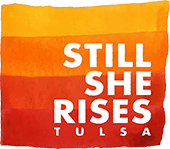Unique Challenges Facing Women in the Criminal Justice System
The number of women in the criminal justice system has increased at nearly double the rate of men since 1985.
By understanding the particular circumstances that cause women’s involvement in the criminal justice system—poverty, mental and physical illness, trauma, gender-based discrimination and racial discrimination— our advocates hope to broaden their representation beyond the confines of a legal case, and thus address the cycle of destabalization for women and their children.
Underlying Causes
Lack of access to steady employment and economic opportunity can manifest itself in criminal justice involvement, reflected in the increasing numbers of women being arrested for non-violent offenses like drug or property crimes.
The percentage of women in state prisons for a drug offense has doubled since 1986. Of the 1,152 women entering Oklahoma's prison system in 2013, 52.6% were arrested for a drug offense.
Women are also particularly vulnerable to arrest and involvement in the criminal justice system because of the higher rates at which they experience trauma, substance abuse, and mental illness.
Nearly 60% of women in state prisons nationwide and as many as 94% of certain female prison populations have a history of sexual or physical abuse.
Nearly three out of four women in state prison in 2005 suffered from mental illness and over 60% have a history of drug dependence.
Oklahoma ranks among the bottom 16 states for women’s mental health, meaning that Oklahoma women report experiencing poor mental-health conditions, including stress, depression and eating disorders, at a higher average than in many other states.
In Oklahoma, as in the rest of the country, women of color are disproportionately arrested and imprisoned.
African-Americans make up only 7.7% of Oklahoma’s population but represent 20% of incarcerated women.
American Indian people of all genders comprise only 9% of the state population, but American Indian women make up 13% of the prison population.
Human Cost
Nearly two-thirds of women in prison are mothers. Incarcerated women are more likely to have their children removed from their care and placed in foster care, reinforcing cycles of family disruption and separation. About 1 in 10 women in state prison were in the foster care system themselves.
A majority of parents in prison are held over 100 miles from their home, making it extremely difficult to maintain relationships with their children.
Over 50% of women in prison have never had a visit from their children
One in three mothers has never spoken with her children by phone while incarcerated.
States can terminate parental rights when a child has been living in foster care for 15 of the last 22 months — more than 60% of mothers in prison are expected to serve more than 24 months on their current sentence.
Research shows that children in foster care have worse outcomes on both short- and long-term measures. Placement in foster care has been linked to an increase in behavioral, psychological, developmental, and academic problems. Approximately 75% of children with an incarcerated parent were identified to have trauma-related stress.
Why North Tulsa?
Oklahoma has the third highest imprisonment rate in the country-106 out of every 100,000 female Oklahomans are incarcerated. Black women and women of color make up a disproportionate percentage of the incarcerated population.
A particularly egregious history of racial violence makes North Tulsa the most under-resourced and marginalized section of Tulsa, exacerbating the social inequities that drive low-income women and women of color into the criminal justice system.

